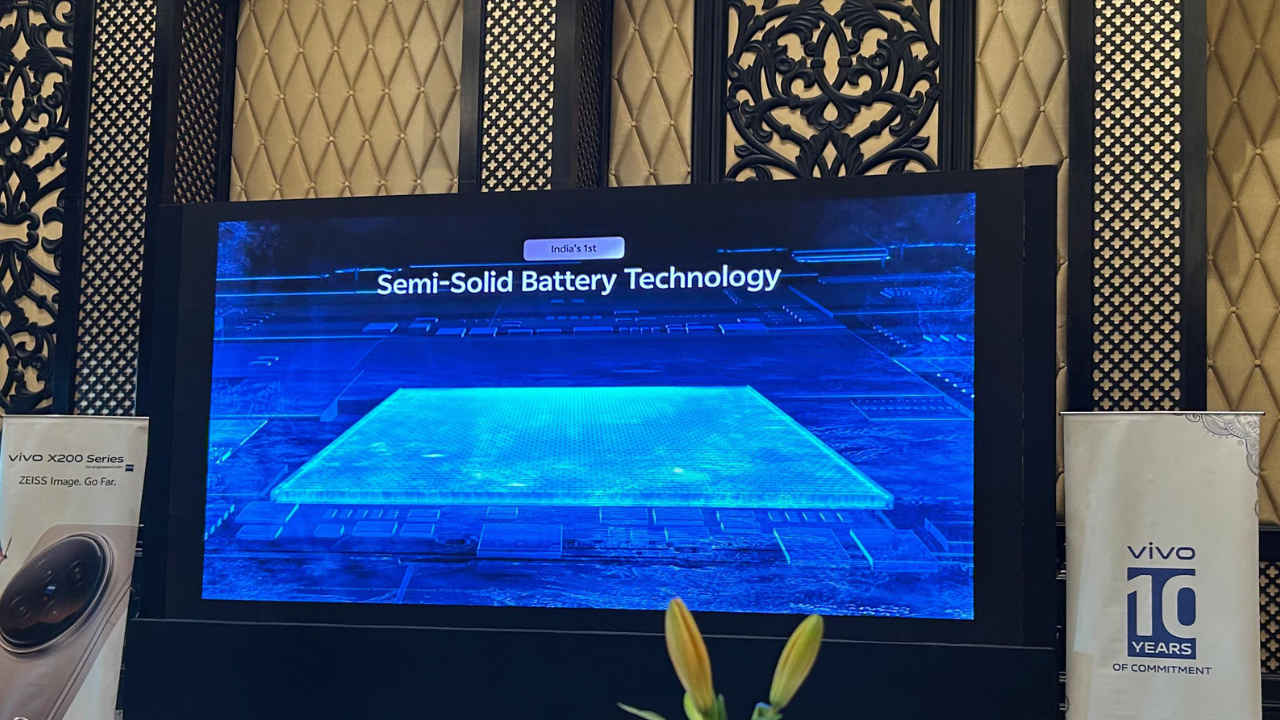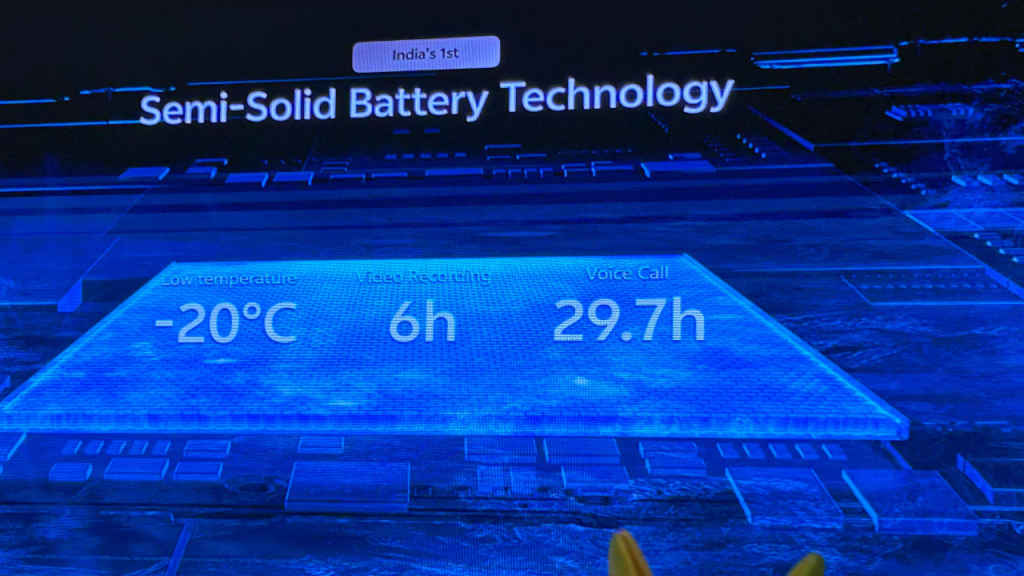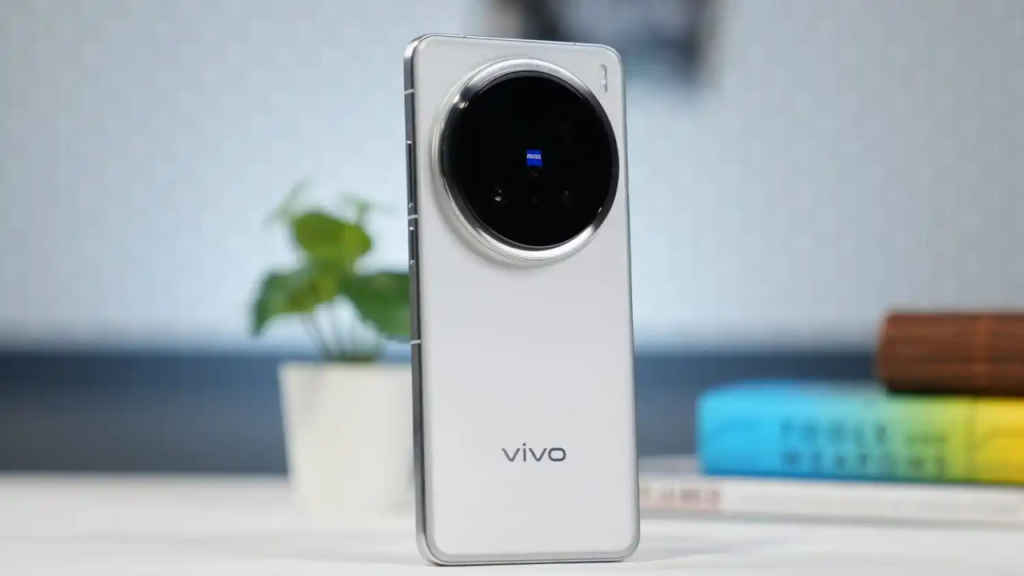What is Semi-Solid Battery in Vivo X200 Pro, and why does it matter?

Smartphone technology is constantly evolving, and battery innovation is critical to this journey. With the X200 Pro (review), Vivo introduced a semi-solid technology for the first time in India, promising improved resilience and performance, particularly in extreme conditions. But what exactly is this semi-solid battery, and how does it make a difference? Let’s discuss.
 Survey
SurveyWhat is a Semi-solid Battery?
At its core, a semi-solid battery is an advanced lithium-ion battery that incorporates a gel-like electrolyte. This is distinct from traditional lithium-ion batteries, which use a liquid electrolyte, and solid-state batteries, which use solid electrolytes. By blending liquid and solid properties, semi-solid batteries strike a balance between energy density, safety, and durability.
One of the significant advantages of this design is its adaptability in challenging environments. Unlike standard lithium-ion batteries that struggle with performance drops when the electrolyte freezes in cold weather, semi-solid batteries maintain their functionality. This makes them particularly suitable for outdoor enthusiasts, such as hikers traversing snow-capped mountains.
Also Read: 4 Types of Quantum Dot Displays – QLED vs QDEL vs QD-OLED vs QD-micro LED
What are the advantages of semi-solid Batteries over regular lithium-ion batteries?

Traditional lithium-ion batteries have been the gold standard in smartphones for years, but they come with limitations. While they offer decent energy density, they are susceptible to capacity loss with temperature variations. Here are a few advantages of semi-solid batteries:
Cold Weather Resilience: Whether you’re skiing in the Alps or exploring the Himalayas, the semi-solid battery ensures that your phone won’t give up when temperatures drop. The gel electrolyte prevents freezing, ensuring stable performance and preventing unexpected shutdowns.
Enhanced Safety: Semi-solid batteries reduce the risk of thermal runaway, a condition that can lead to battery fires. The gel-like electrolyte is less likely to leak or ignite, making these batteries safer for everyday use.
Improved Longevity: The semi-solid design reduces wear and tear on battery components, which translates to a longer lifespan. Vivo’s implementation means users can enjoy consistent battery performance for years.
Also Read: What are wide colour gamuts like DCI-P3 and why they can be misleading
Semi-solid vs Solid-state Batteries
Semi-solid and solid-state batteries are often compared, as both represent advancements over traditional lithium-ion designs. Solid-state batteries completely eliminate liquid components, using solid electrolytes for even greater safety and energy density. However, they are currently expensive and challenging to mass-produce for consumer devices.
Semi-solid batteries offer a middle ground, combining some benefits of solid-state technology with the cost and scalability advantages of liquid-based designs
What’s Next: Solid-state batteries in smartphones

Solid-state batteries are heralded as the future of smartphone power. These batteries replace liquid electrolytes entirely with solid materials, resulting in higher energy densities, faster charging, and improved safety. Companies like Samsung are making significant strides in this domain, with prototypes showcasing promising results. In fact, Samsung claims that their solid-state batteries can charge from 10% to 80% capacity in nine minutes.
However, challenges like production costs and scalability mean widespread adoption is still years away. When they do arrive, solid-state batteries could revolutionize smartphones, making them lighter, safer, and more powerful.
Also Read: Dolby Vision and Dolby Vision IQ explained – What makes them better than HDR10 and HDR10+?
Real-world performance of Vivo’s Semi-solid Battery
For Indian consumers, Vivo’s semi-solid battery technology marks a step forward. Imagine you’re on a winter trek in Manali, capturing breathtaking landscapes. Traditional batteries might struggle with sudden shutdowns, but the X200 Pro promises to withstand the cold and deliver uninterrupted performance. The phone promises to be a treat for camera professionals and for those relying on their phones in harsh environments, this innovation offers some assurance.
In our review, we found the Vivo X200 Pro to deliver impressive battery performance. Its 6,000 mAh Silicon carbon battery lasted nearly 20 hours in the PCMark Battery Test, outperforming competitors like the OPPO Find X8 Pro and Realme GT 7 Pro.
In daily usage, the device provided 9-10 hours of screen-on time with medium to heavy use. Charging is efficient, with the 90W wired charger taking the battery from 0 to 100% in 45 minutes.
Deepak Singh
Deepak is Editor at Digit. He is passionate about technology and has been keeping an eye on emerging technology trends for nearly a decade. When he is not working, he likes to read and to spend quality time with his family. View Full Profile